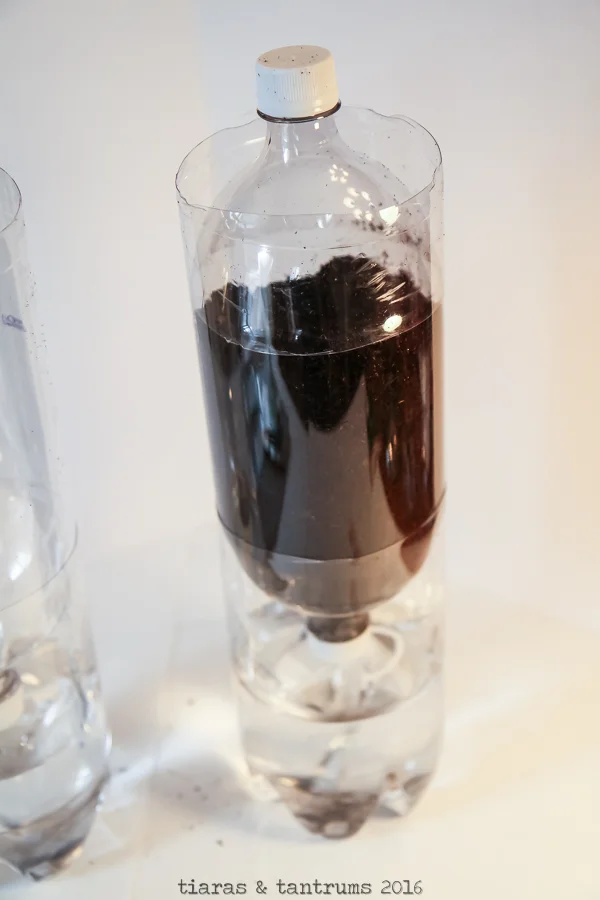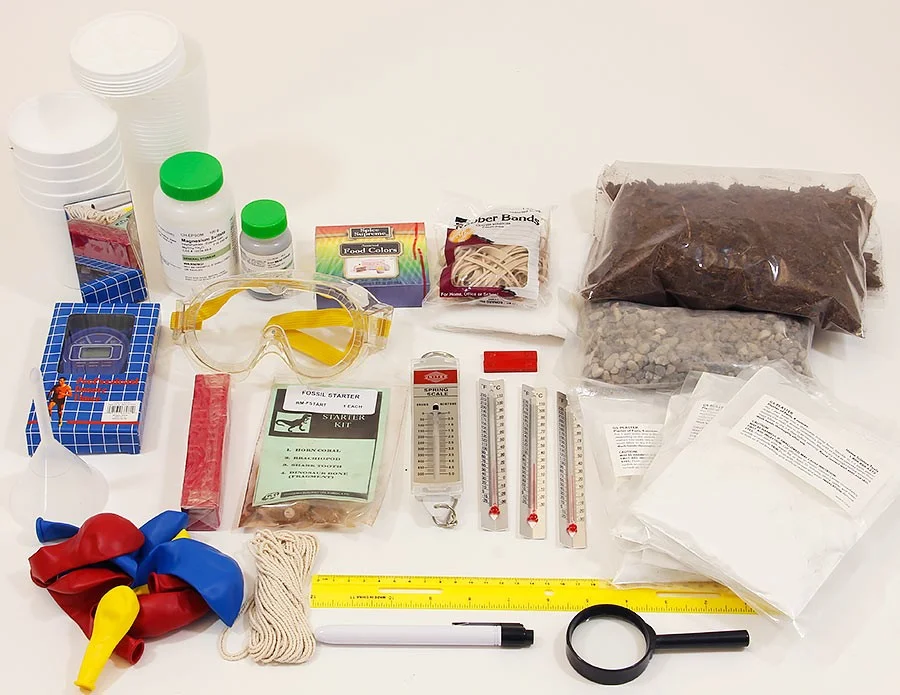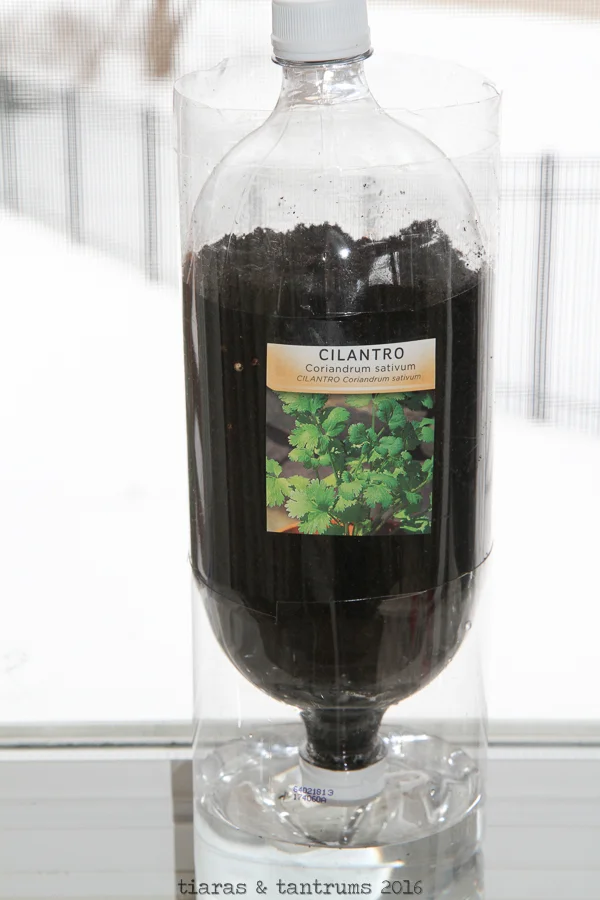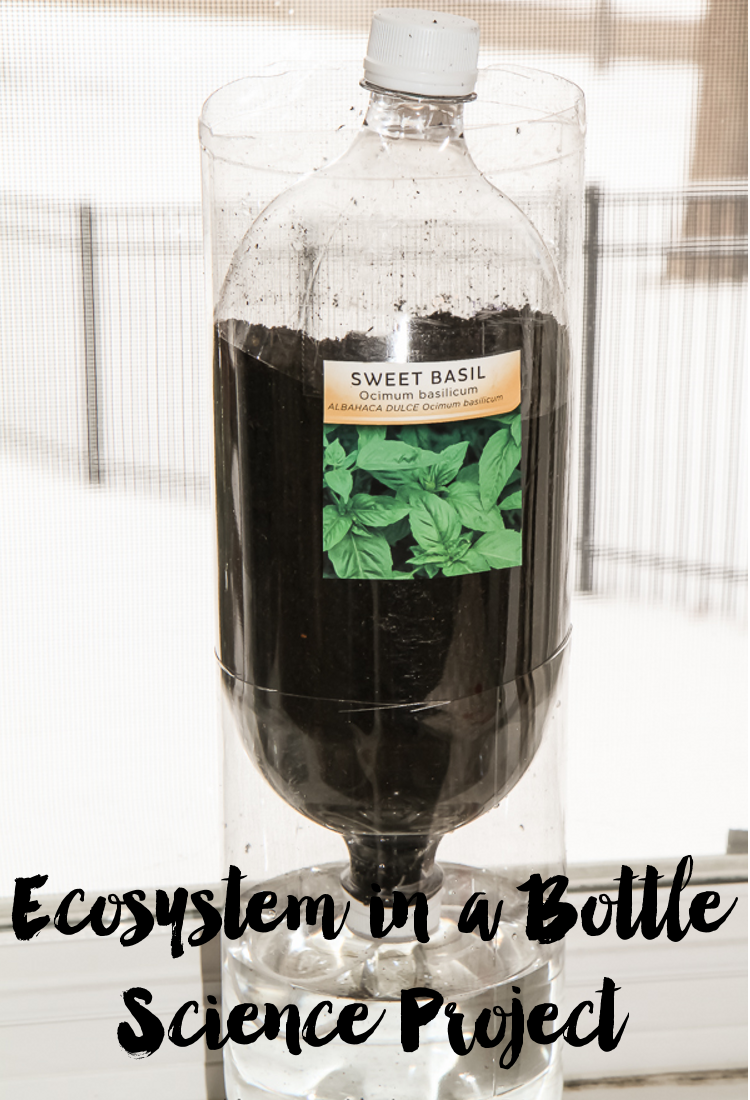Ecosystem in a Bottle Science Project
With an Ecosystem in a Bottle Science Experiment for Elementary Students and Middle School Students and even High School Students, you will be building a terraqium column which will allow you discover the relationships between living organisms, and their environment.
It is hard to believe that I am in our sixth year of home educating my children. From the beginning our our journey to educate at home, my children have shown a keen interest in Science. Which baffled me in the beginning because when I was in elementary school and in high school I literally despised Science.
What I have come to discover as I have been teaching the Sciences to my children is that I actually love Science, I just had very bad teachers. And maybe, not necessarily bad teachers; but very uninterested and boring teachers. To teach Science, you have to be excited about it. You have to let your own love of the Science show to your students, that being my children.
In the lower grade levels of teaching when I had all three children home with me, they were very much into experiments. One year I ordered kits for the entire school year. My kiddos were happy to perform all these experiments. Sadly, we did not have good luck with these kits as all the pre-packaged kits were very old and they rarely worked.
The next school year, I ordered more Science kits from another vendor and we had better luck. What I realized was if I had the list of equipment we would need and purchased our own NEW, that the experiments worked out perfectly. Needless to say, I have been wary of Science kits from this experience.
We have been a STEM family for a six years now. I am happy to say we are heavy on the Sciences in my house. My son gobbled up Science when he was home with me. I remember doing dual Science each year and it almost was not enough for his Science hungry mind. We just received an acceptance letter last week letting us know that my son has been accepted to the Science, Math and Technology Academy for High School. He was so happy and we are so proud. I like to think that I fostered his love of Science in our home educating years together. I cant wait to see what he does in the next four years in high school.
This past fall we attended the Family Forward conference and had the pleasure of conducting a Science experiment whilst there. My kids were in experiment heaven. After the conference, I was asked if I would like to continue to participate with Camp Science at home. Of course, we were happy and excited to participate!
Disclosure: This Ecosystem in a Bottle | A Science Project I have not been compensated for this post, I received the Science kit for my children. All opinions are my own.
We received our first kit a bit before the holidays and didn't have the opportunity to complete the experiment until recently. My son was just finishing up his Science Fair project, Worm Composting - What do Worms Eat? We needed to clear out the worm bins (we had 500 healthy worms in my dining room) before we began growing some herbs.
Ecosystem in a Bottle
aka: Miniature Greenhouse
{lesson plan for home educators}
Quotes of the Day:
What most people know but don't realize they know is that the world is almost entirely solar-powered already. If the sun wasn't there, we'd be a frozen ice ball at three degrees Kelvin, and the sun powers the entire system of precipitation. The whole ecosystem is solar-powered.
I love all of the ecosystems - mountains, deserts, rain forests. They're beautiful, and nature has so many different flavors to it.
Our challenge for the future is that we realize we are very much a part of the earth's ecosystem, and we must learn to respect and live according to the basic biological laws of nature.
ECOSYSTEM:
An ecosystem is all the things that interact in a specific area, whether they are living or non-living. Some examples of non-living things that support life in an ecosystem are light, air, soil and water. Living things, like plants, called organisms, use those resources. Each of the specific ecosystems in the world has its own conditions created by the non-living things. These conditions determine what kinds of living things will be able to thrive there.
Organisms can only thrive where their needs are being met. Everything in an organism’s environment has an effect on it. One ecosystem that allows many different kinds of organisms to thrive is a temperate zone. It is an area where the conditions never become too hot or too cold.
All the living things in an ecosystem are called a community. All of one specific kind of organism living in a community is called a population. They take in nutrients like air, sunlight, water, and food. They use energy from those nutrients to grow and develop. They release energy by doing work and moving. They release waste products. They react to things in their environment.
VOCABULARY:
Ecosytem: A complex group of connected elements such as plants, animals and microbes that function as a unit in an environment.
Ecology: The science of the relationships of organisms to one another and their physical surroundings.
Terraqua Column: A bottle system that is composed of elements that live or relate to the earth and aquatic habitats.
Organism: An individual animal, plant or single-celled life form
SUPPLIES:
This post may contain affiliate links. Please see my disclosure policy.
Some of my Favorite Finds
Some of my Favorite Finds From Amazon :
Inquiries in Science: Sustaining Ecosystems Multi-Class Equipment Set
Scissors
Marker
Seeds
Caps*
Two 2-liter bottles
Water
Soil
Wicks
Ruler
Drill
Safety glasses
Vice grips
HYPOTHESIS
A self-sustained ecosystem is dependent on relating to living organisms and nonliving physical and chemical interactions.
PROCEDURE
This video is very helpful visually for children. I have found that with my kiddos, they have an easier time seeing the experiment than listening to me trying to explain it to them.
Discovering Ecosystems:
What observations did you have when you looked at your ecosystem today? Has anything changed? How are the seeds or plants?
How do you expect the plants to grow?
What is one example of a non-living thing in an ecosystem?
What are three of the life processes that living organisms do?
What does population mean in a community?
When does an organism thrive?
Why does a temperate zone support many varieties of organisms?
How much water will be absorbed from the reservoir?
What will the plants look like or taste like?
If they included many elements in their ecosystem, what do they expect to happen?
How do they feel when there are lots of people in a crowded room?
Can anyone name an example of an environment?
What happens when we have too many organisms in one environment?
If you were able to design an environment, what would it look like? Which plants would you have in it? How would you decide how many plants you would put in your environment? Would you also live in your environment?
How would you get the right amounts of air, water and food for each of your plants?
Can you think of some of the steps an engineer may need to complete when designing something?
Where to Put the Ecosystem
Light is an essential part of ecosystems. Without it, photosynthesis would not take place and plants would die. Put the ecosystem in an area that gets direct sunlight for a few hours every day, that won't be knocked over or disturbed by people or pets and a location that can be observed easily.
Once the ecosystem is assembled, watch it grow and see how the elements mature. Have your kiddos check their ecosystems every couple of days to observe and record the progress. We can't wait for the fresh herbs we will have in a a month or so.
STEM
Introducing your kids to the concepts of STEM encourages their natural curiosity about the world around them. Getting kids excited about STEM activities can help them make their own connections and their own discoveries about how things work. I am so happy I fostered my son's love of Science, Technology, Engineering and Math because NOW, he will be attending an Academy for high school that will fostering his growth in STEM. I can't wait to see what he will be doing in the next four years!
Science is a way of thinking and looking at the world
Technology is a way of doing and making things work
Engineering is a way of designing and building things that work
Math is a way of measuring, calculating and predicting results













